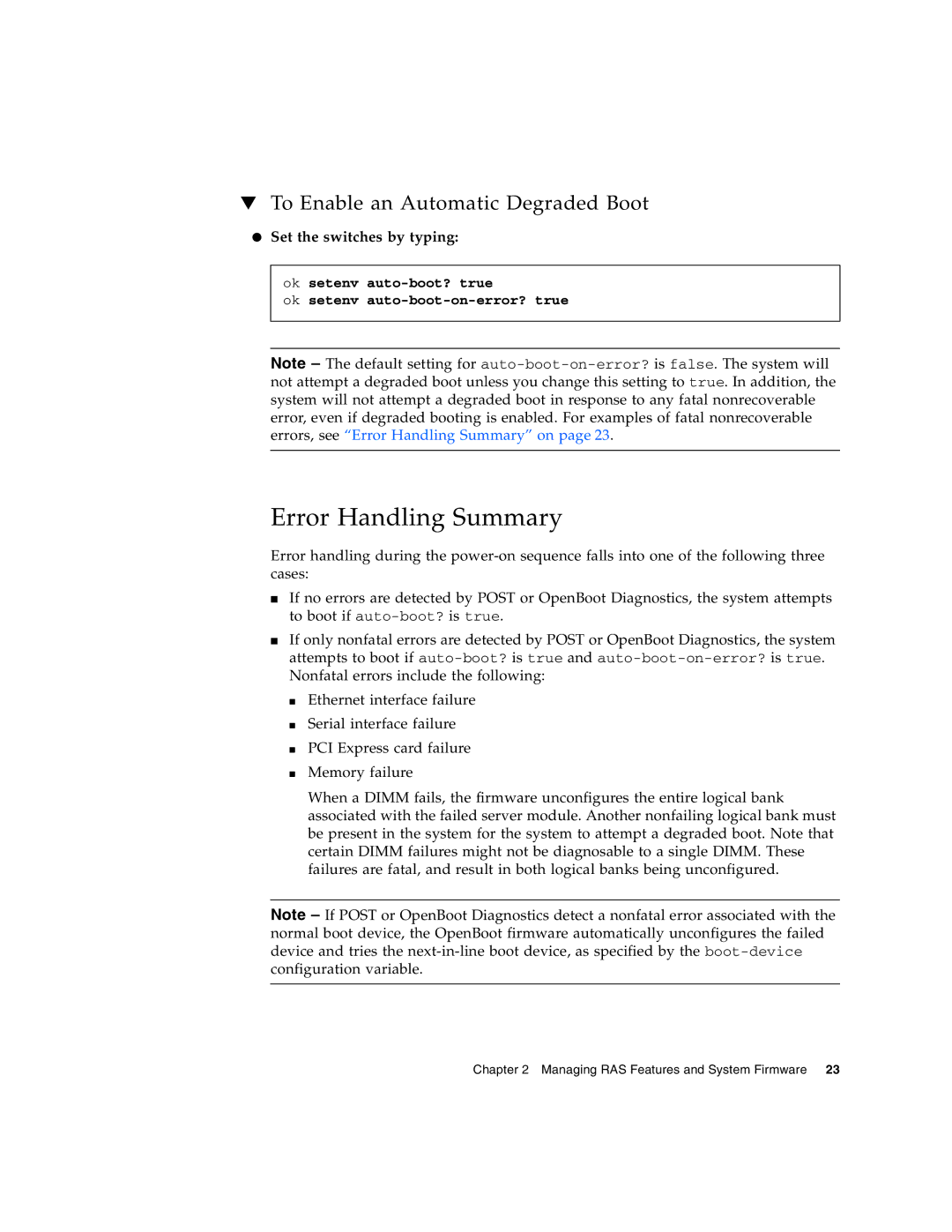
▼To Enable an Automatic Degraded Boot
●Set the switches by typing:
ok setenv
ok setenv
Note – The default setting for
Error Handling Summary
Error handling during the
■If no errors are detected by POST or OpenBoot Diagnostics, the system attempts to boot if
■If only nonfatal errors are detected by POST or OpenBoot Diagnostics, the system attempts to boot if
■Ethernet interface failure
■Serial interface failure
■PCI Express card failure
■Memory failure
When a DIMM fails, the firmware unconfigures the entire logical bank associated with the failed server module. Another nonfailing logical bank must be present in the system for the system to attempt a degraded boot. Note that certain DIMM failures might not be diagnosable to a single DIMM. These failures are fatal, and result in both logical banks being unconfigured.
Note – If POST or OpenBoot Diagnostics detect a nonfatal error associated with the normal boot device, the OpenBoot firmware automatically unconfigures the failed device and tries the
Chapter 2 Managing RAS Features and System Firmware 23
